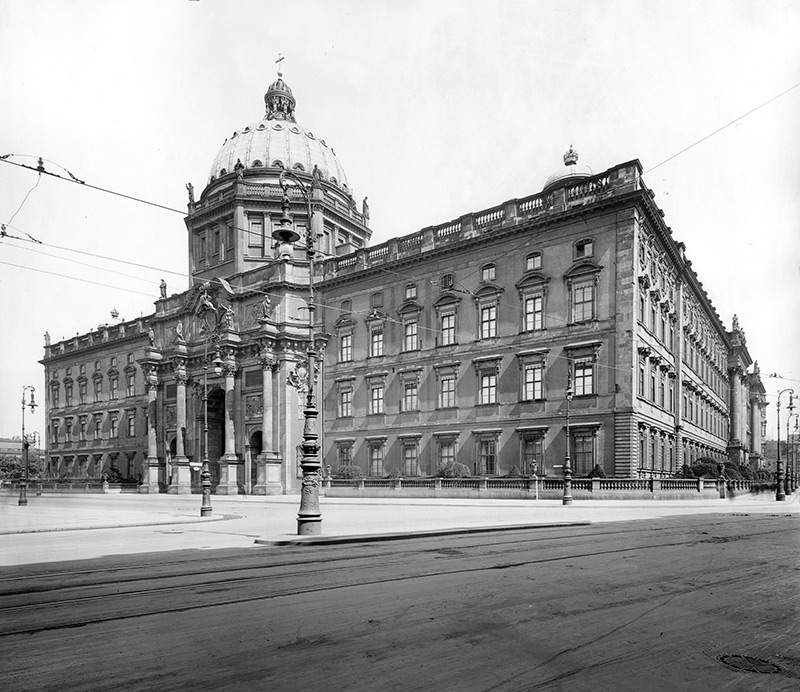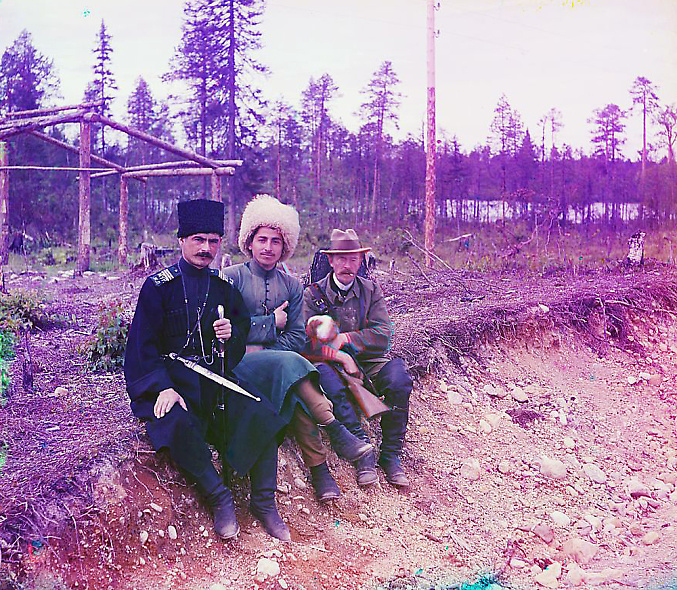| View previous topic :: View next topic |
| Author |
Message |
Attila


Joined: 24 Feb 2007
Posts: 57865
Location: Hungary
Expire: 2025-11-18
|
 Posted: Tue Feb 16, 2010 9:11 pm Post subject: Glass negative scanning Posted: Tue Feb 16, 2010 9:11 pm Post subject: Glass negative scanning |
 |
|
Attila wrote:
Today I bought a box of glass negative made around 1910-30. I thought perhaps I able to scan them. Any experience ?
_________________
-------------------------------
Items on sale on Ebay
Sony NEX-7 Carl Zeiss Planar 85mm f1.4, Minolta MD 35mm f1.8, Konica 135mm f2.5, Minolta MD 50mm f1.2, Minolta MD 250mm f5.6, Carl Zeiss Sonnar 180mm f2.8
|
|
| Back to top |
|
 |
ludoo


Joined: 18 Sep 2009
Posts: 1397
Location: Milan, Italy
Expire: 2011-12-05
|
 Posted: Tue Feb 16, 2010 9:38 pm Post subject: Posted: Tue Feb 16, 2010 9:38 pm Post subject: |
 |
|
ludoo wrote:
I have a box full of glass plates from my mother's family. This was (badly) scanned with a cheap scanner a while ago

I just put the emulsion side on the glass, scanned, and reversed the scan. |
|
| Back to top |
|
 |
Attila


Joined: 24 Feb 2007
Posts: 57865
Location: Hungary
Expire: 2025-11-18
|
 Posted: Tue Feb 16, 2010 9:41 pm Post subject: Posted: Tue Feb 16, 2010 9:41 pm Post subject: |
 |
|
Attila wrote:
wow! Did you use scan like a paper photo or scan as a negative film ?
_________________
-------------------------------
Items on sale on Ebay
Sony NEX-7 Carl Zeiss Planar 85mm f1.4, Minolta MD 35mm f1.8, Konica 135mm f2.5, Minolta MD 50mm f1.2, Minolta MD 250mm f5.6, Carl Zeiss Sonnar 180mm f2.8
|
|
| Back to top |
|
 |
Katastrofo

Joined: 26 Feb 2007
Posts: 10405
Location: USA
Expire: 2013-11-19
|
 Posted: Tue Feb 16, 2010 9:48 pm Post subject: Posted: Tue Feb 16, 2010 9:48 pm Post subject: |
 |
|
Katastrofo wrote:
Really curious how you fare with color negatives. |
|
| Back to top |
|
 |
Sevo

Joined: 22 Aug 2008
Posts: 1189
Location: Frankfurt, Germany
Expire: 2012-12-03
|
 Posted: Tue Feb 16, 2010 10:39 pm Post subject: Posted: Tue Feb 16, 2010 10:39 pm Post subject: |
 |
|
Sevo wrote:
I don't think there ever have been colour negative glass plates. Early colour processes from the plate age like Autochrome could not be copied and hence were all reversal, and by the time of Kodachrome, the plate age was already past and roll and sheet film had taken over - CN came yet another five years later.
Sevo
_________________
Sevo |
|
| Back to top |
|
 |
ludoo


Joined: 18 Sep 2009
Posts: 1397
Location: Milan, Italy
Expire: 2011-12-05
|
 Posted: Tue Feb 16, 2010 10:40 pm Post subject: Posted: Tue Feb 16, 2010 10:40 pm Post subject: |
 |
|
ludoo wrote:
| Attila wrote: |
| wow! Did you use scan like a paper photo or scan as a negative film ? |
Like a film, on an Epson 1640. |
|
| Back to top |
|
 |
Carlsson


Joined: 26 Jul 2008
Posts: 793
Location: Portugal
|
 Posted: Tue Feb 16, 2010 10:57 pm Post subject: Posted: Tue Feb 16, 2010 10:57 pm Post subject: |
 |
|
Carlsson wrote:
I've scanned 15,8x15.8" glass plates like a print, saved as 16bit tiff, inverted in Photoshop and manually set black and white point.

_________________
Contax III, Zeiss Ikon ZM, Contax AX, EOS 5D, R-D1
https://mariaeero.com/contax/ |
|
| Back to top |
|
 |
themoleman342


Joined: 21 Oct 2007
Posts: 2190
Location: East Coast (CT), U.S.A.
Expire: 2013-01-24
|
 Posted: Tue Feb 16, 2010 10:59 pm Post subject: Posted: Tue Feb 16, 2010 10:59 pm Post subject: |
 |
|
themoleman342 wrote:
http://blogs.denverpost.com/captured/2009/10/21/color-photography-from-russian-in-the-early-1900s/
A few samples from turn-of-the-century glass negatives.
http://www.loc.gov/exhibits/empire/making.html
The process that Prokudin-Gorskii used for getting the color photographs. |
|
| Back to top |
|
 |
Attila


Joined: 24 Feb 2007
Posts: 57865
Location: Hungary
Expire: 2025-11-18
|
 Posted: Tue Feb 16, 2010 11:13 pm Post subject: Posted: Tue Feb 16, 2010 11:13 pm Post subject: |
 |
|
Attila wrote:
Many thanks mates!
_________________
-------------------------------
Items on sale on Ebay
Sony NEX-7 Carl Zeiss Planar 85mm f1.4, Minolta MD 35mm f1.8, Konica 135mm f2.5, Minolta MD 50mm f1.2, Minolta MD 250mm f5.6, Carl Zeiss Sonnar 180mm f2.8
|
|
| Back to top |
|
 |
Katastrofo

Joined: 26 Feb 2007
Posts: 10405
Location: USA
Expire: 2013-11-19
|
 Posted: Tue Feb 16, 2010 11:20 pm Post subject: Posted: Tue Feb 16, 2010 11:20 pm Post subject: |
 |
|
Katastrofo wrote:
I completely misread this, I was thinking you were using them to hold
down negatives of your own. Really like the samples I've seen here and
good luck, Attila, do post some of your results. |
|
| Back to top |
|
 |
mo


Joined: 27 Aug 2009
Posts: 8979
Location: Australia
Expire: 2016-07-30
|
 Posted: Wed Feb 17, 2010 1:38 am Post subject: Posted: Wed Feb 17, 2010 1:38 am Post subject: |
 |
|
mo wrote:
It would be nice to have a dedicated posting area for these old photos/negatives...good on you for saving them Attila....I heard a horrible story of what happened when an old photographers business was sold...the new owner turfed/threw out all his (the old owners) negatives.....idiot!! The only reason why he found this out was some one had gone to get some reprints after the business had changed hands.This was in the 70s 
_________________
Moira, Moderator 
Fuji XE-1,Pentax K-01,Panasonic G1,Panasonic G5,Pentax MX
Ricoh Singlex TLS,KR-5,KR-5Super,XR-10
Lenses
Auto Rikenon's 55/1.4, 1.8, 2.8... 50/1.7 Takumar 2/58 Preset Takumar 2.8/105 Auto Takumar 2.2/55, 3.5/35 Super Takumar 1.8/55...Macro Takumar F4/50... CZJ Biotar ALU M42 2/58 CZJ Tessar ALU M42 2.8/50
CZJ DDR Flektogon Zebra M42 2.8/35 CZJ Pancolar M42 2/50 CZJ Pancolar Exakta 2/50
Auto Mamiya/Sekor 1.8/55 ...Auto Mamiya/Sekor 2/50 Auto Mamiya/Sekor 2.8/50 Auto Mamiya/Sekor 200/3.5 Tamron SP500/8 Tamron SP350/5.6 Tamron SP90/2.5
Primoplan 1.9/58 Primagon 4.5/35 Telemegor 5.5/150 Angenieux 3.5/28 Angenieux 3,5/135 Y 2
Canon FL 58/1.2,Canon FL85/1.8,Canon FL 100/3.5,Canon SSC 2.8/100 ,Konica AR 100/2.8, Nikkor P 105/2.5
|
|
| Back to top |
|
 |
Attila


Joined: 24 Feb 2007
Posts: 57865
Location: Hungary
Expire: 2025-11-18
|
 Posted: Wed Feb 17, 2010 1:40 am Post subject: Posted: Wed Feb 17, 2010 1:40 am Post subject: |
 |
|
Attila wrote:
http://forum.mflenses.com/glass-negatives-from-1910-1930-t25346.html
_________________
-------------------------------
Items on sale on Ebay
Sony NEX-7 Carl Zeiss Planar 85mm f1.4, Minolta MD 35mm f1.8, Konica 135mm f2.5, Minolta MD 50mm f1.2, Minolta MD 250mm f5.6, Carl Zeiss Sonnar 180mm f2.8
|
|
| Back to top |
|
 |
mo


Joined: 27 Aug 2009
Posts: 8979
Location: Australia
Expire: 2016-07-30
|
 Posted: Wed Feb 17, 2010 1:52 am Post subject: Posted: Wed Feb 17, 2010 1:52 am Post subject: |
 |
|
mo wrote:
 Thanks Thanks
_________________
Moira, Moderator 
Fuji XE-1,Pentax K-01,Panasonic G1,Panasonic G5,Pentax MX
Ricoh Singlex TLS,KR-5,KR-5Super,XR-10
Lenses
Auto Rikenon's 55/1.4, 1.8, 2.8... 50/1.7 Takumar 2/58 Preset Takumar 2.8/105 Auto Takumar 2.2/55, 3.5/35 Super Takumar 1.8/55...Macro Takumar F4/50... CZJ Biotar ALU M42 2/58 CZJ Tessar ALU M42 2.8/50
CZJ DDR Flektogon Zebra M42 2.8/35 CZJ Pancolar M42 2/50 CZJ Pancolar Exakta 2/50
Auto Mamiya/Sekor 1.8/55 ...Auto Mamiya/Sekor 2/50 Auto Mamiya/Sekor 2.8/50 Auto Mamiya/Sekor 200/3.5 Tamron SP500/8 Tamron SP350/5.6 Tamron SP90/2.5
Primoplan 1.9/58 Primagon 4.5/35 Telemegor 5.5/150 Angenieux 3.5/28 Angenieux 3,5/135 Y 2
Canon FL 58/1.2,Canon FL85/1.8,Canon FL 100/3.5,Canon SSC 2.8/100 ,Konica AR 100/2.8, Nikkor P 105/2.5
|
|
| Back to top |
|
 |
Farside


Joined: 01 Sep 2007
Posts: 6557
Location: Ireland
Expire: 2013-12-27
|
 Posted: Wed Feb 17, 2010 4:19 am Post subject: Posted: Wed Feb 17, 2010 4:19 am Post subject: |
 |
|
Farside wrote:
| themoleman342 wrote: |
http://blogs.denverpost.com/captured/2009/10/21/color-photography-from-russian-in-the-early-1900s/
A few samples from turn-of-the-century glass negatives.
http://www.loc.gov/exhibits/empire/making.html
The process that Prokudin-Gorskii used for getting the color photographs. |
Something a couple of commenters said - look at them with a pair of old 3D glasses or red green filters. As an unintentional result of the mis-registration, some of them leap out. I'm of the opinion that the taking camera was similar in layout to the projector - ie, he took the three shots simultaneously, not sequentially. It would have been utterly impossible to have people be rock-steady for simultaneous shots. The slow emulsions of the day would have necessitated a lengthy enough exposure anyway, which certainly explains the fixed expressions on the subjects/victims.
Look at the guy's arm.

_________________
Dave - Moderator
Camera Fiend and Biograph Operator
If I wanted soot and whitewash I'd be a chimney sweep and house painter.
The Lenses of Farside (click)
BUY FRESH FOMAPAN TO HELP KEEP THE FACTORY ALIVE ---
Foma Campaign topic -
http://forum.mflenses.com/foma-campaign-t55443.html
FOMAPAN on forum -
http://www.mflenses.com/fs.php?sw=Fomapan
Webshop Norway
http://www.fomafoto.com/
Webshop Czech
https://fomaobchod.cz/inshop/scripts/shop.aspx?action=DoChangeLanguage&LangID=4 |
|
| Back to top |
|
 |
Sevo

Joined: 22 Aug 2008
Posts: 1189
Location: Frankfurt, Germany
Expire: 2012-12-03
|
 Posted: Wed Feb 17, 2010 7:35 am Post subject: Posted: Wed Feb 17, 2010 7:35 am Post subject: |
 |
|
Sevo wrote:
| Farside wrote: |
| [ I'm of the opinion that the taking camera was similar in layout to the projector - ie, he took the three shots simultaneously, not sequentially. It would have been utterly impossible to have people be rock-steady for simultaneous shots. The slow emulsions of the day would have necessitated a lengthy enough exposure |
The process and cameras are well known and published - he was stepping through a three-segment plate sequentially. It is quite obvious really, as animate objects (in particular horses, leaves, water and other things that can't be told to stop moving) are out of register rather than near or far ones (as would happen with three non-coincident cameras).
Emulsions prior to WW1 were around ISO 7-15, not that slow any more, with exposures well below a second in sunlight. With the rather strong filter factors and switching time of his process thrown in, it might have summed up to a maybe thirty second cycle stepping through three filters. No big deal, the older among his subjects will still have remembered times when they had to hold still for half an hour for a black and white shot...
Sevo
_________________
Sevo |
|
| Back to top |
|
 |
|
|
|
You cannot post new topics in this forum
You cannot reply to topics in this forum
You cannot edit your posts in this forum
You cannot delete your posts in this forum
You cannot vote in polls in this forum
|
